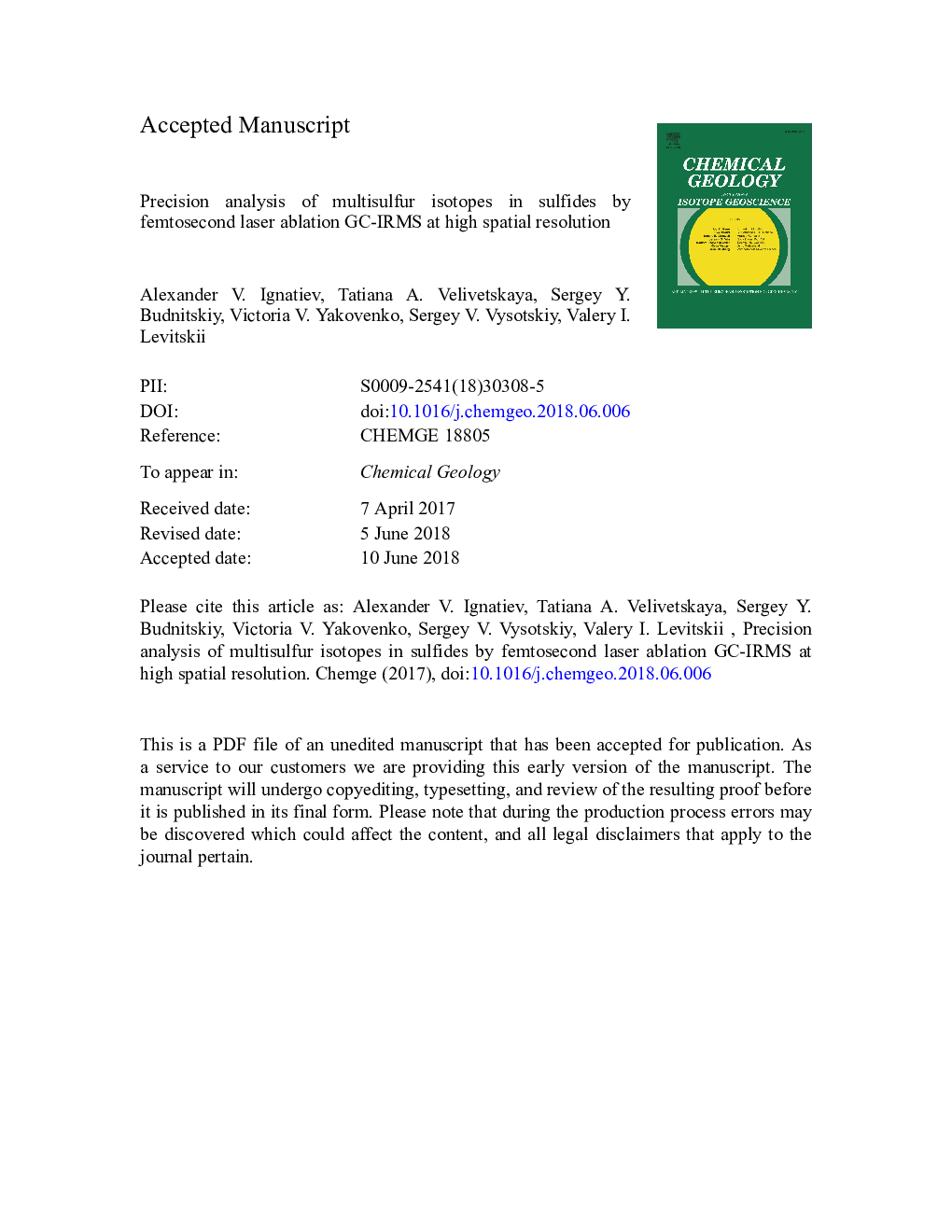| Article ID | Journal | Published Year | Pages | File Type |
|---|---|---|---|---|
| 8910151 | Chemical Geology | 2018 | 48 Pages |
Abstract
A new laser ablation method has been developed for measurements of multiple sulfur isotopes in sulfides using a femtosecond laser ablation system in combination with a reactor for sulfide aerosol conversion into SF6 gas, a cryogenic and chromatographic purification system, and an isotope ratio mass spectrometer (FsLA-GC-IRMS). In this method, femtosecond laser-generated aerosol sulfide particles were transferred by the helium carrier gas from the sample chamber into the reactor to convert them to SF6via reaction with BrF5. Cryogenically and chromatographically purified SF6 was transferred by helium carrier gas to the interface that was developed for introducing SF6 into the ion source of a mass spectrometer running in high-vacuum operation mode. For the routine analysis of sulfide, a precision of 0.1-0.2â° (1Ï) for δ34S and higher than 0.03â° (1 Ï) for â33S values has been obtained with an ablation crater size of 80â¯Î¼m diameter and 40â¯Î¼m depth. The method was tested using reference materials IAEA-S-1, IAEA-S-2, IAEA-S-3 and NBS-123, as well as some natural pyrite, sphalerite and galena samples. The δ34S values obtained by our method are in good agreement (within analytical precision) with the results obtained by the conventional dual inlet method. The FsLA-CG-IRMS method was applied to study sulfur isotope ratios in Archean rocks of the Cheremshanskaya formation (Sharyzhalgai uplift in the southeastern Siberian craton). We found that â33S values in sulfides from these rocks ranged +2.30 to +2.68â°. The reliability of the results obtained here was confirmed by comparative analyses of isotope ratios in sulfides from rocks younger than 2.4â¯Ga in which the anomaly of the 33S isotope could be unlikely to occur. The calculated δ34S'â¯=â¯ln(δ34S/1000â¯+â¯1)*1000 and δ33S'â¯=â¯ln(δ33S/1000â¯+â¯1)*1000 values of this set of samples yielded a straight line passing through the origin with a slope of 0.5152 (±0.002) on a conventional sulfur three-isotope plot that is in good agreement with a slope of 0.515, which was theoretically calculated for the mass-dependent fractionation of sulfur isotopes.
Related Topics
Physical Sciences and Engineering
Earth and Planetary Sciences
Geochemistry and Petrology
Authors
Alexander V. Ignatiev, Tatiana A. Velivetskaya, Sergey Y. Budnitskiy, Victoria V. Yakovenko, Sergey V. Vysotskiy, Valery I. Levitskii,
